🇨🇳 I watched a video on Chinese Character strokes from my new Coursera Chinese course for HSK from Beijing University. Originally, people studying Mandarin learn to write Chinese characters with the stroke order, but in the past year taking Duolingo Chinese lessons I’ve done without. I hate breaking a tradition that is perhaps more than 2,000 years old, but new technology and apps allow users to enter pinyin letters on your phone or laptop keyboard that then allow you to choose the right character from a set of 6-10. The video about basic stroke order was very helpful though and I’ll try to use it when writing with a pen on paper.
Then I studied 100 radicals that many Chinese characters are composed of. To test myself, I copied the table into a sheet to enter the meaning next to it. YOu can do the same using this list.
Then I learned about 30 basic words in both characters and pinyin writing, such as from the following table. Throughout the years I’ve seen various methods to learn Chinese, including some Chinese study books and famous language institutes that I worked for. Many of those Chinese courses teach their learners pinyin in the first modules to get them acquainted with the sound, vocabulary and grammar before moving onto understanding and writing the often strange and therefore difficult characters. But as the characters are an attractive element for me personally to learn Mandarin, I skipped some of the beginning chapters and jumped to character modules right away. Duolingo offers both characters and pinyin though:
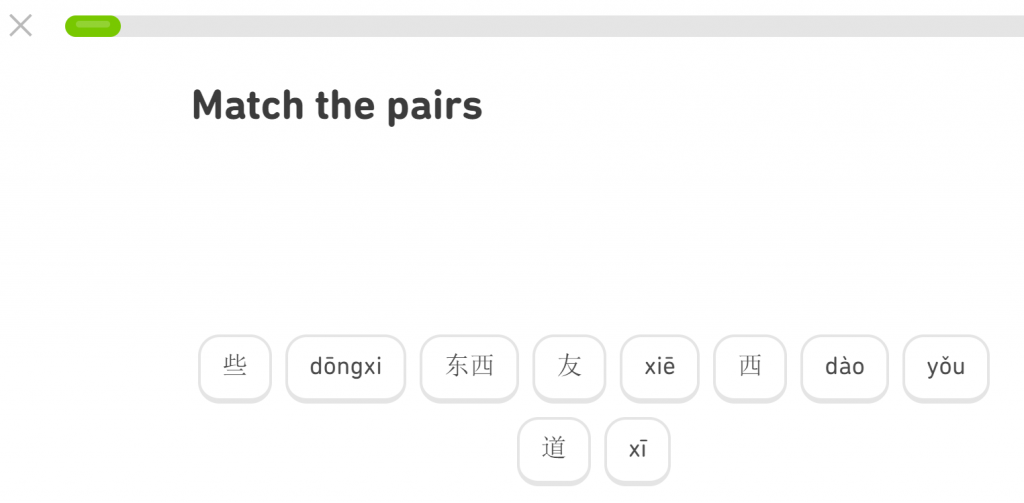
So does this Coursera course from Beijing university:
| 1 | 是 | shì | to be |
| 2 | 哪 | nǎ | which |
| 3 | 国 | ɡuó | country or nation |
| 4 | 人 | rén | person or people |
| 5 | 中国 | Zhōnɡɡuó | China |
| 6 | *美国 | Měiɡuó | The United States of America |
| 7 | 她 | tā | she |
| 8 | 也 | yě | also |
Enough Chinese for now! Tomorrow I’m going to continue with this lesson when I have my other laptop on which I can type Chinese characters better. Then I will also start my comparison between my Coursera HSK 4 course from Beijing University to Chinese lessons on Duolingo.
2. Japanese on Duolingo
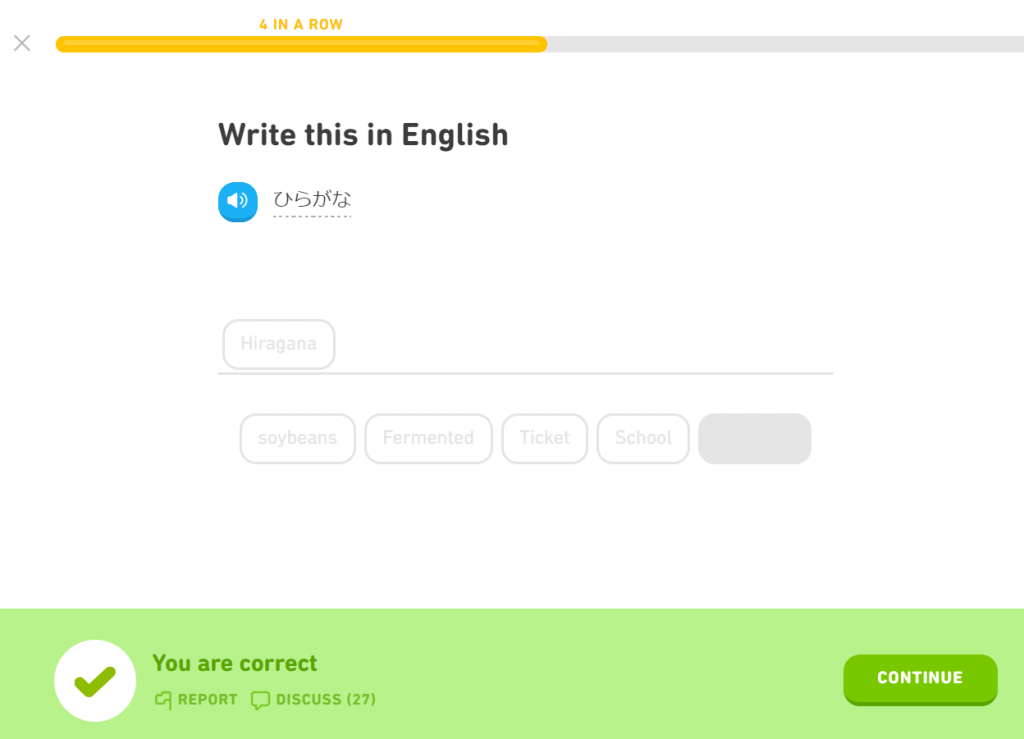
First you’re introduced to the Hiragana spelling and the sound of some known words, such as sushi, tofu or in this case Hiragana.
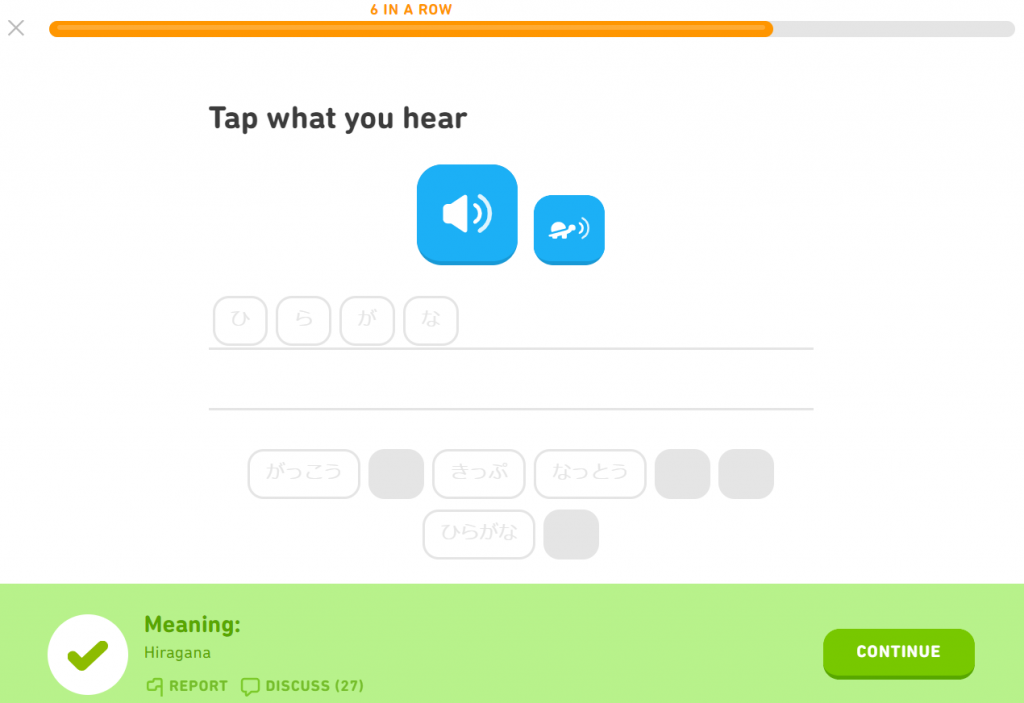
Polish on Duolingo
I then took two Duolingo Polish adjective lessons. You can either take a few lessons covering the same grammatical topic in order to master new grammar completely, or you may decide to take a variety of different lesson types each day to practice a bit of various grammar and vocab groups each day.
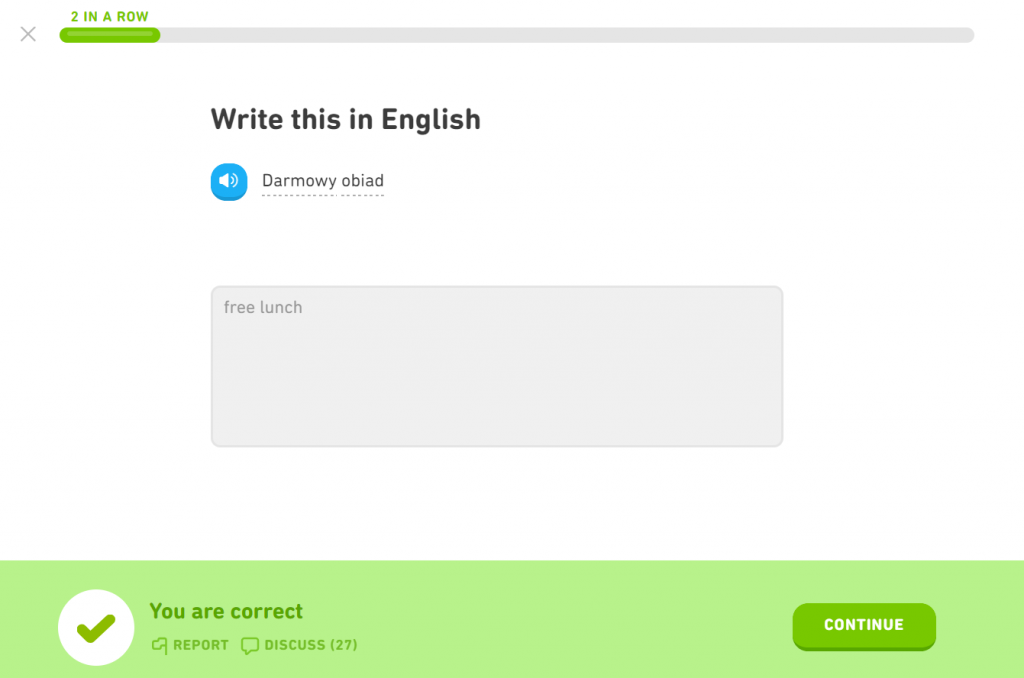
If possible, use the keyboard and try to actively type in your target and instruction language,
instead of using the wordbank with given possible translations. You can also do this a bit later.
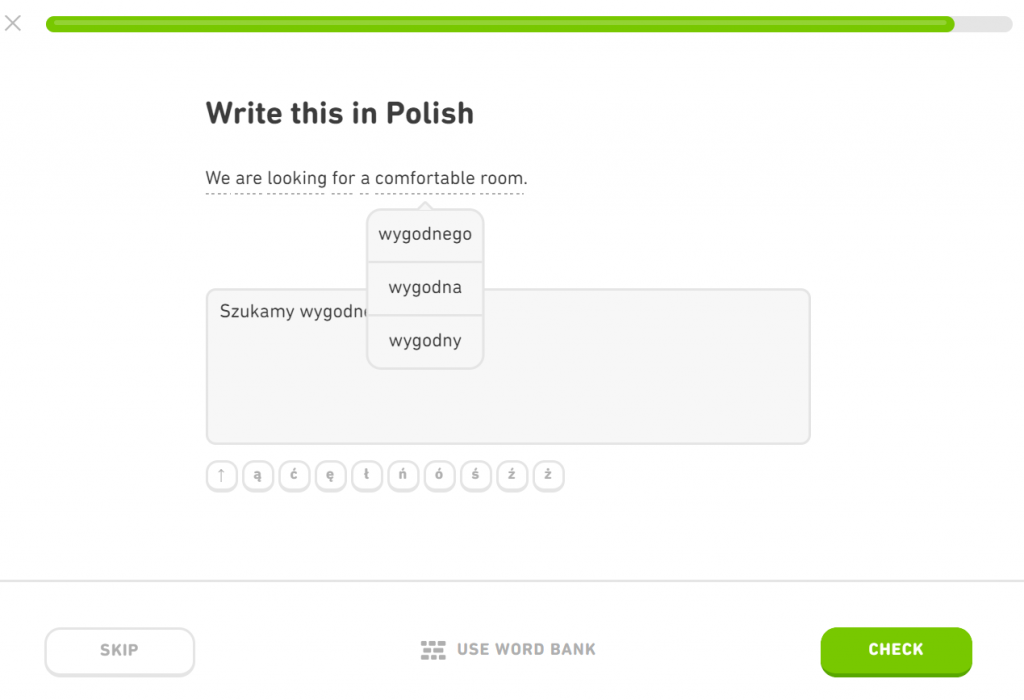
That’s it for today. I shouldn’t overdo it. That way I’ll be better able to keep up with it.